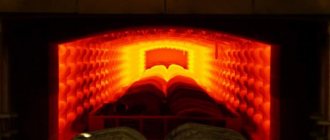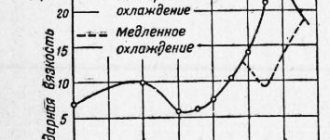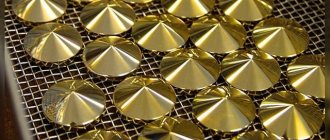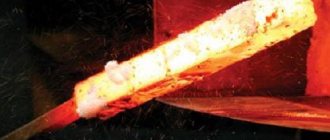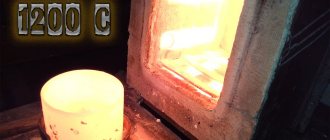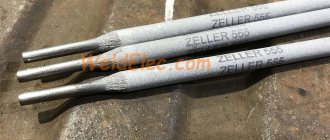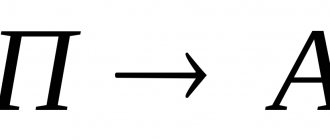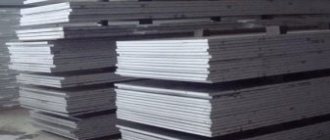Until now, many machine-building enterprises use classical technology for improving steel products. It consists of heating for hardening in an oxidizing or protective atmosphere, cooling of parts in water, oil or polymer and subsequent tempering in furnaces with an oxidizing atmosphere. The output is products with surface warping up to 0.2 mm. and a black film, which is the result of the formation of oxides on the metal. Such parts have one road - to the workshop for mechanical finishing of surface geometry. The formation of oxides on the surface can be avoided by using protective atmospheres of endo- and exogas, nitrogen, etc. But warping will always be a mandatory attribute of heating and hardening of steels.
Modern technologies make it possible to significantly reduce changes in the geometric dimensions of surfaces, using more gradual heating of parts and using softer coolers as quenching media. This is achieved by vacuum heating with cooling in a gas flow.
Reducing the pressure to a level ≤ 5 x 10−5 atm leads to the fact that the amount of remaining oxygen in the working space of the furnace is reduced and heating in such an atmosphere occurs without the formation of oxides on the surface of the parts. Higher purity of heat treatment can be achieved by preparing the surface of parts - pre-firing, to maximize the removal of moisture from the surface, if any. To do this, the parts are passed through a pre-oxidation furnace at a temperature of about 600 °C, when decarburization has not yet begun. Typically, such a furnace is provided in a vacuum heat treatment line. It has another purpose - decarburization of the surface before cementation. According to foreign colleagues, preliminary decarbonization of the steel surface increases the rate of carburization by several tens of percent.
In a vacuum, heat transfer occurs due to radiation, the so-called radiation heating. But it occurs effectively only when the radiation becomes visible, i.e. at temperatures exceeding 600 °C. At lower temperatures, a special gas filler for the furnace working space, for example nitrogen, is used to accelerate heating. When using such gas, heating time is reduced by a third.
The use of a gas atmosphere in a low-temperature heating range (convective heating) increases the uniformity of heating of products and, accordingly, makes it possible to reduce the level of thermal stresses that cause warping. In addition to reducing heating time and reducing warping, the advantage of using convective heating is the ability to use a denser load, i.e. productivity increase.
The filler gas can also be used as a quenching and tempering medium, i.e. All hardening operations (heating for hardening and hardening) can be performed on the same technological equipment - a vacuum furnace.
Evacuation of chambers
During the pumping process, all gases, both free and dissolved in the parts, are removed from the volume of the product. For these purposes, long-term heating of the shell and product parts is required at temperatures up to 500°C.
What is hardening
Metal hardening is a type of heat treatment of metal products. In this case, the metal is heated to extremely high temperatures, and then sharply cooled in oil or water.
There are 2 types of metal hardening:
- Polymorphic. Used for processing steel products.
- Non-polymorphic. They are used for many types of non-ferrous metals, but make it brittle and practically not ductile.
At the end of polymorphic hardening, the material being processed becomes viscous, so steel products must be tempered, and after without polymorphic treatment, the material must be additionally aged. However, the material may become a little softer.
The following types of hardening are also distinguished:
- Full.
- Incomplete.
It is determined based on the area of the metal being processed, that is, you can harden the entire product or its individual sections. If for some reason manufacturers want to eliminate hardening, then they perform annealing. To carry out these manipulations, scientists have developed special furnaces for hardening, annealing, tempering, etc. Let’s consider the features of this equipment.
Vacuum hardening furnaces
Furnaces for hardening metal are called vacuum furnaces, because one of the main elements of their design is a vacuum pump, thanks to which vacuum and pressure are created inside the chamber.
Application and purpose of vacuum furnaces
Vacuum furnaces for hardening parts are used in instrument and mechanical engineering, construction, metallurgical industries and in industries requiring metal processing (full or partial).
Today, manufacturers offer to buy a muffle/crucible or tubular furnace for metal hardening with the following characteristics:
- Power potential 3-20 kW. In fact, this kilovolt range has a minimal effect on the heat treatment of the device.
- A standard industrial chamber can be loaded with 15-40 kg. metal In this case, the power of the device can increase, depending on the loaded amount of raw materials. Some large-sized ovens can accommodate up to 100 kg at a time. raw materials, so it is also convenient for large metallurgical enterprises to work with equipment and meet daily standards.
A thermal induction furnace for hardening with average characteristics is capable of operating in the temperature range of 1800-2000˚ and processing up to 9000 kg per shift. raw materials.
Operating principle of vacuum hardening furnaces
The essence of the operation of a crucible, tubular and muffle furnace for hardening metal is based on the principle of an arc charge when gas mixtures come into contact with electric current. As a result, the concentrated arc formed in a vacuum has a thermal effect. Consequently, equipment operating at minimum power can heat up and melt steel.
The principle of heat transfer from the chamber to the metal is also important. It can be direct or indirect.
- Direct is characterized by energetic deformation between the electrode and the workpiece that receives heat.
- Indirect involves 2 electrodes that interact with each other and act on an object at a distance.
Experienced specialists believe that the highest quality is a vacuum furnace operating on the principle of direct transmission. However, it requires caution and attention, because it can have a negative impact on the contents of the chamber.
Soldering in hydrogen and vacuum furnaces
Soldering in furnaces most fully embodies the technological capabilities and features of the process, ensures stable quality of connections of various parts, allows for maximum mechanization and automation of the production of soldered products; Due to group processing, it can be very economical.
Soldering is a complex physical and chemical process of obtaining a permanent connection as a result of the interaction of solid solder and liquid filler metals (solder) of the parts being connected. The formation of a seam during soldering occurs by filling the gap between the parts being connected with solder, i.e. The soldering process is associated with capillary flow. The soldering process is carried out at temperatures below the melting point of the soldered material.
Soldering has advantages over other methods of joining parts: the ability to connect many blanks that make up the product into a single whole in one step. Soldering allows you to join dissimilar metals, as well as metals and ceramics. When soldering, the edges of the soldered parts do not melt, which makes it possible to maintain the shape and dimensions of the product during the production process.
PSR 72 solder (also PSR 50, PSrMPd 68), an alloy of eutectic composition (based on silver with copper or palladium), which has high manufacturability, has been widely used for soldering in furnaces. Solders containing silver also have increased thermal and electrical conductivity, high ductility, strength, corrosion resistance and manufacturability. Therefore, these solders are widely used in soldering products, vacuum equipment and structures subject to high mechanical loads.
Titanium solders have increased activity and the ability to wet the surfaces of refractory metals and metals coated with oxides. Soldering of metals (mainly copper) with titanium solders is carried out in a vacuum, which ensures uniform heating of the parts being connected without deformation, even with large dimensions of the product.
Vacuum soldering has been successfully used to join many metals. This type of soldering is quite economical and completely safe. Soldered seams obtained using vacuum heating are distinguished by cleanliness of execution, strength of the weld metal and high corrosion resistance.
Vacuum Density Test
The main requirement for soldered joints or sealed products is their vacuum tightness. The most convenient method of leak detection is a helium leak detector. The leak detector allows you to detect leaks that allow an air flow of 102 to 105 l µm/sec. Smaller leaks in sealed products can be detected by pressure testing in a helium environment. The product is placed in a sealed chamber filled with helium, and the pressure of the residual gas is measured after 24 hours. This method allows you to reject sealed products where long-term maintenance of high vacuum is necessary.
Tempering furnaces
Tempering ovens are industrial devices that heat the contents to a temperature of 1150-2000˚ depending on the type, power and model of the device. This equipment is a heat-resistant chamber in which metals are placed and heated at high temperatures.
Furnaces for hardening metal are of the following types:
- Muffle.
- Crucible.
- Tubular.
They have the same purpose and allow processing metals, ranging from tin to tungsten. If we take into account the muffle type of furnace, then it is in demand and universal, due to the fact that it can harden not only metals, but also ceramic and clay products.
In addition, thermal furnaces for hardening metal and other materials are safe. They are used in laboratory conditions during experiments. A modern range of industrial equipment allows you to buy a furnace for hardening metal, based on the scope of activity, daily volume of work and cost, so each enterprise can purchase equipment with a high service life/quality, a fire protection mechanism and shielding, allowing specialists to monitor the hardening process.
